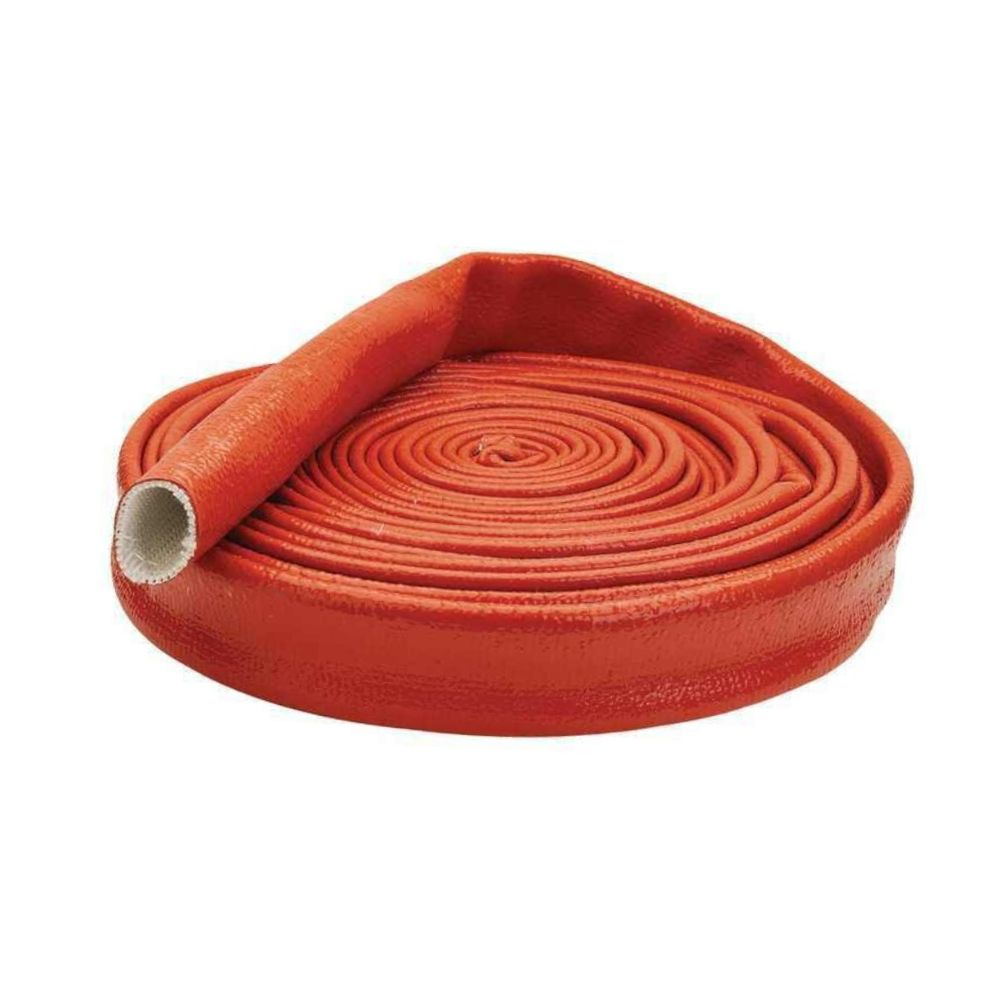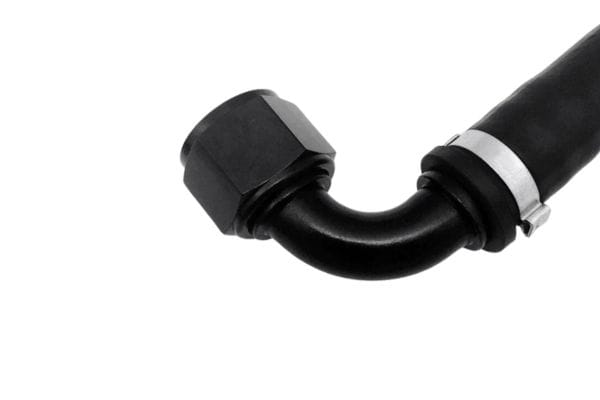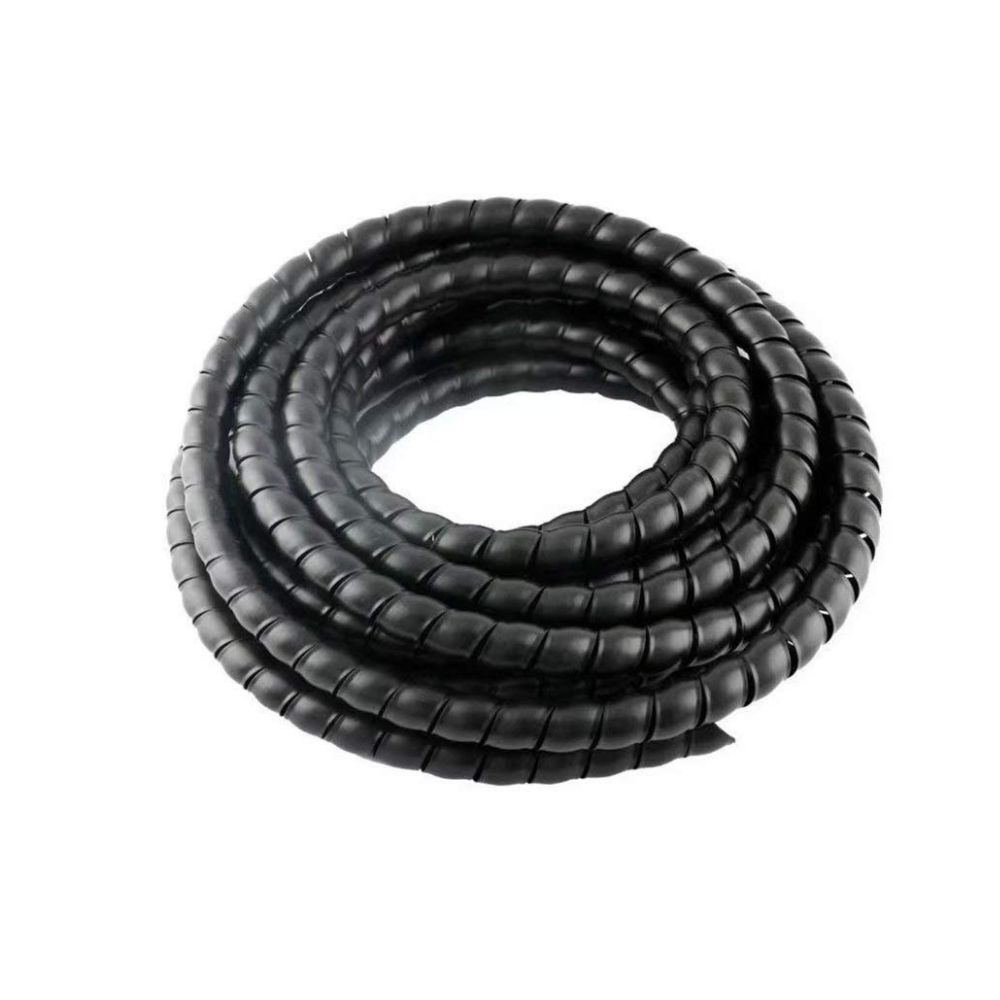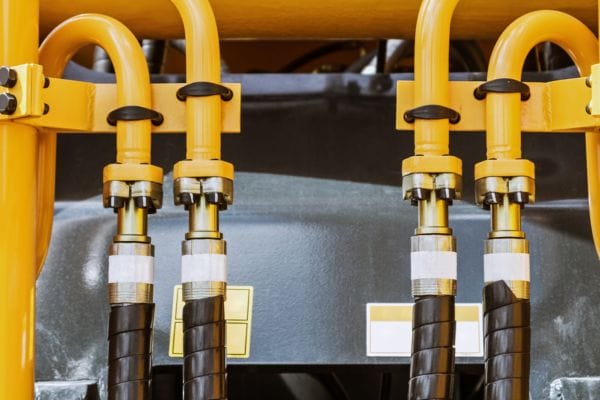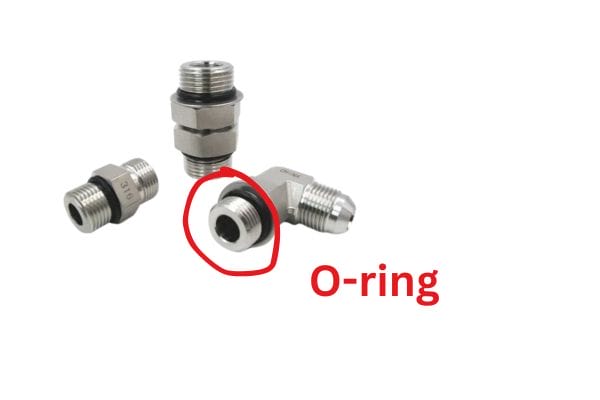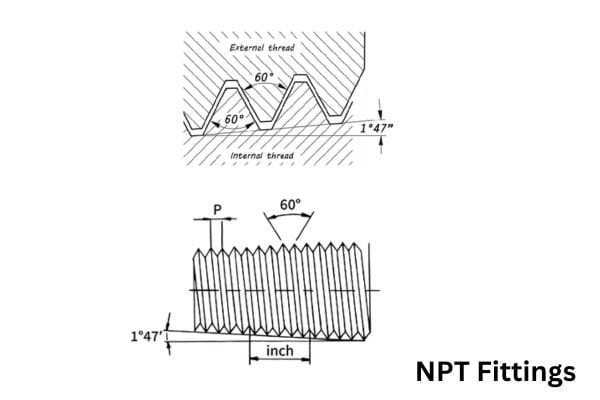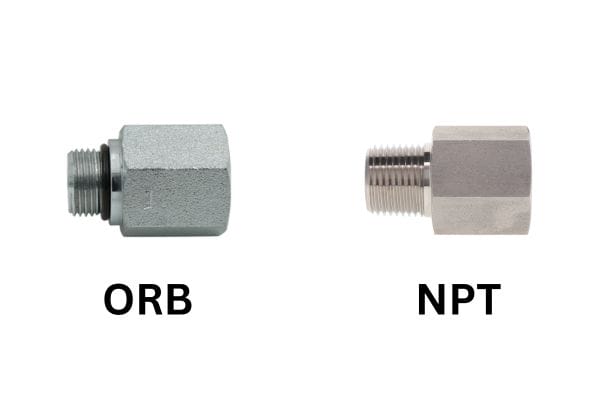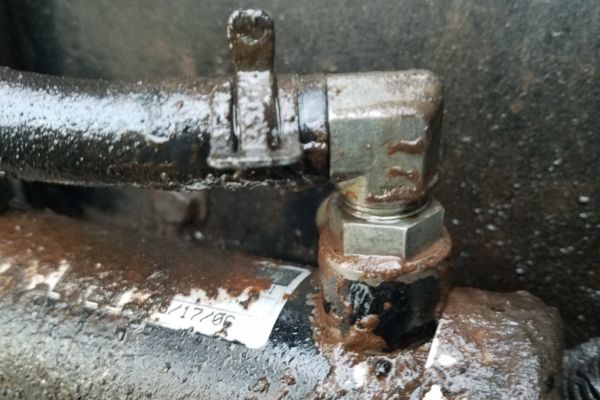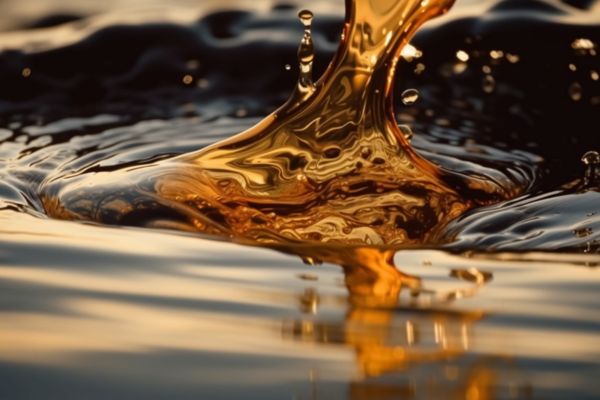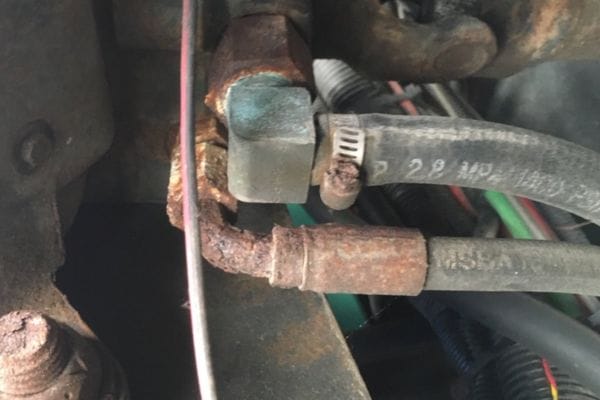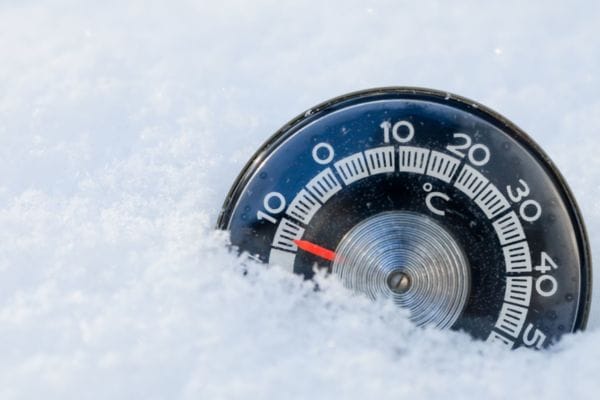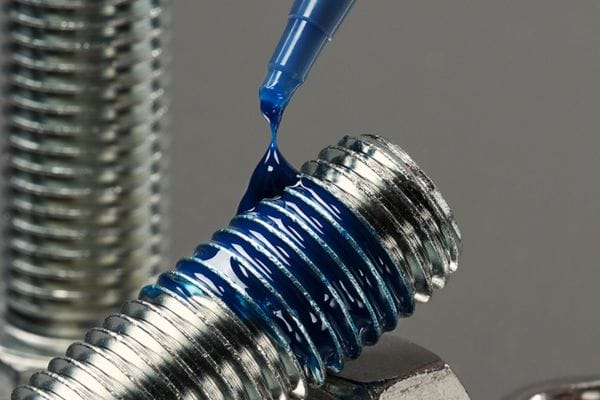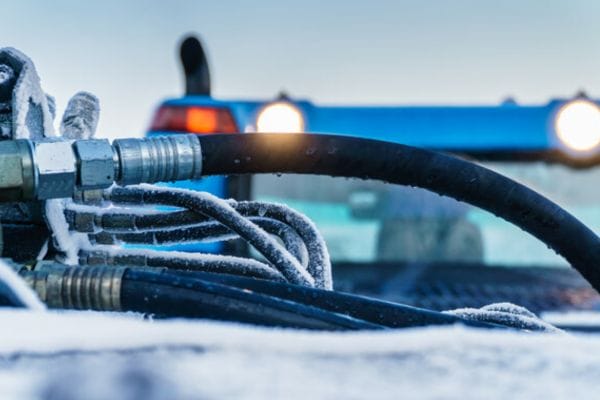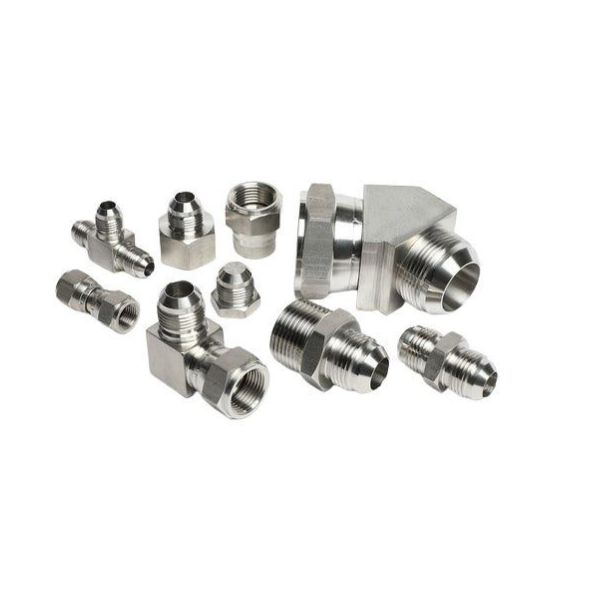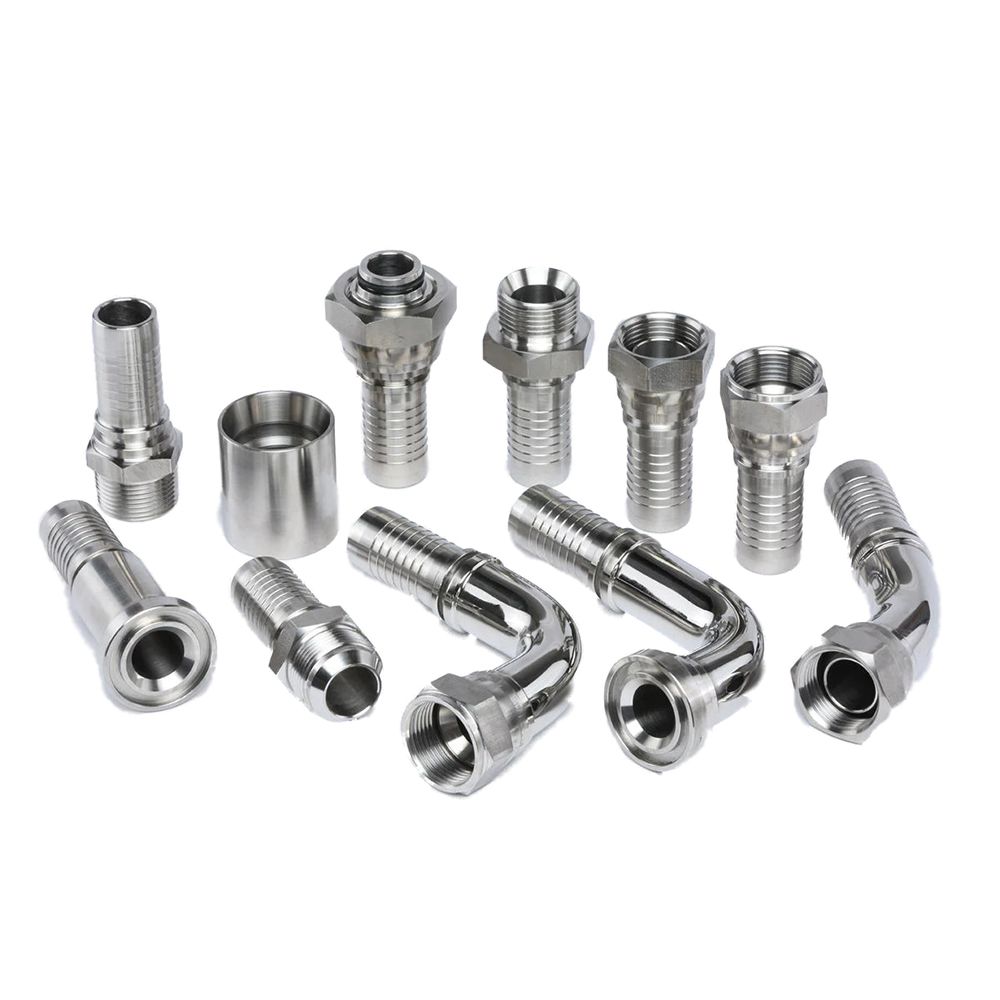The longevity of hydraulic hoses is paramount to maintaining operational integrity and minimizing costly downtime. If hoses fail, the consequences can be severe, leading to expensive repairs, production halts, or even safety hazards for workers. Thus, protecting hydraulic hoses and ensuring they last as long as possible is not just a matter of operational efficiency but a critical safety concern.
Understanding Hydraulic Hose Failure
Hydraulic hose failure is a critical issue that can lead to system downtime, safety risks, and costly repairs. Understanding the common causes of hydraulic hose failure and the different types of damage that can occur is essential for preventing these issues. By identifying potential problems early on and addressing them proactively, you can ensure the longevity and performance of your hydraulic system.
Common Causes of Hydraulic Hose Failure
Abrasion and External Damage
Abrasion is one of the leading causes of hydraulic hose failure. Hoses often rub against surfaces such as machinery, other hoses, or sharp edges. Over time, this friction can wear away the outer layers of the hose, exposing the internal layers to further damage. Without proper protection, the hose can weaken and eventually fail, leading to leaks or bursts.
Fluid Contamination
Contaminated hydraulic fluid can severely damage hoses from the inside out. Dirt, metal particles, and other contaminants can erode the inner lining of the hose, causing cracks and weakening the structure. Additionally, contamination can cause blockages that result in pressure buildup, increasing the likelihood of a catastrophic hose failure.
Incorrect Installation
Improper installation, including incorrect routing, insufficient support, or incorrect fitting selection, can put undue stress on hydraulic hoses. Kinking, twisting, or bending hoses beyond their recommended limits during installation can lead to premature wear and reduce the hose’s ability to withstand pressure and movement.
Exposure to Extreme Temperatures
Hydraulic hoses are designed to operate within specific temperature ranges. Excessive heat can cause the hose material to soften, leading to deformation and reduced pressure capacity. On the other hand, exposure to extreme cold can make hoses brittle, increasing the risk of cracks or breakage. Maintaining the correct operating temperature is crucial to preventing temperature-induced hose damage.
Overpressure and Hose Stress
Hydraulic hoses are rated for specific pressure ranges. Operating outside these limits can cause the hose to swell, weaken, or burst. Overpressure often results from pressure spikes within the system, and repeated exposure to excessive pressure can cause cumulative damage. It’s essential to monitor system pressure and avoid exceeding the hose’s rated capacity to prevent failure.
Types of Hydraulic Hose Damage
Abrasion Wear
Abrasion wear is characterized by visible rubbing or scraping on the outer surface of the hose. This type of damage often appears in high-contact areas where hoses are exposed to other machinery or surfaces. If left unchecked, abrasion wear can lead to leaks or full hose rupture as the internal structure becomes compromised.
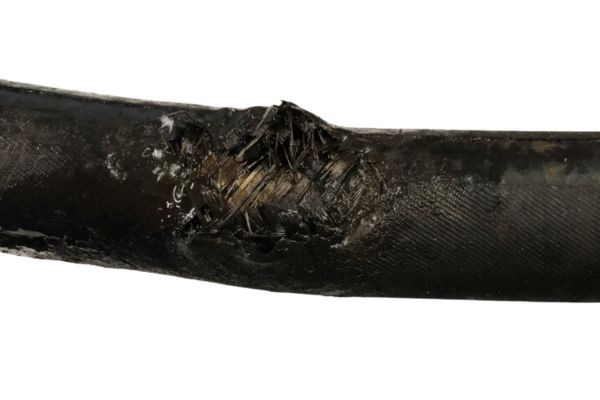
Chemical Degradation
Exposure to incompatible chemicals can degrade the hose material over time. This damage manifests as cracking, swelling, or discoloration of the hose. Chemical degradation weakens the hose’s structural integrity and can eventually fail, especially in applications where hoses carry or come into contact with corrosive fluids.
Hose Kinking and Twisting
Kinking and twisting are forms of mechanical damage often caused by incorrect installation or operation. A kinked or twisted hose has reduced flow capacity and increased stress on its structure. This can lead to internal damage, including separation of the hose layers, reducing the hose’s ability to handle pressure, and increasing the risk of failure.
Environmental Factors
Environmental factors such as exposure to the sun, extreme heat, cold, and moisture can significantly impact hydraulic hoses. UV radiation from the sun can cause hoses to crack or degrade, while excessive moisture can lead to swelling and mold growth. Heat and cold can cause the hose material to expand, contract, or become brittle, all of which contribute to premature failure.
Signs of Impending Hose Failure
Leaks
Leaks are one of the most apparent signs of hose failure. They can occur from cracks, pinholes, or breaks in the hose. Fluid leakage is not only wasteful but can also create safety hazards, particularly in high-pressure systems. Small leaks may seem minor but can quickly escalate to more severe issues if not addressed promptly.
Visible Cracks or Worn Spots
Regular inspections of hydraulic hoses can reveal visible cracks, worn spots, or areas of thinning on the outer surface. These are warning signs that the hose has experienced significant wear and is at risk of failure. Addressing these issues early on by replacing or repairing the hose can prevent a more catastrophic failure down the line.
Stiffness or Brittleness in the Hose Material
Hydraulic hoses should remain flexible to accommodate movement and pressure changes within the system. If a hose becomes stiff, brittle, or difficult to bend, it indicates that the material has degraded. This can be due to exposure to environmental factors, chemical contamination, or simply age. Stiff or brittle hoses are more prone to cracking and should be replaced immediately.
Best Practices for Protecting Hydraulic Hoses
Protecting hydraulic hoses effectively requires implementing several best practices. By focusing on proper installation, regular maintenance, and preventive measures, you can extend the life of your hoses and ensure the overall efficiency of your hydraulic system.
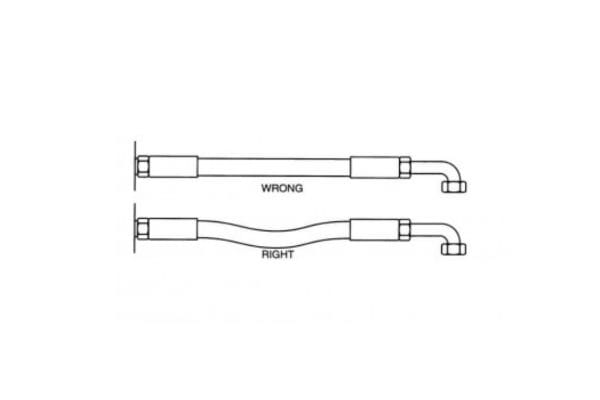
Hose Routing and Installation
Importance of Proper Hose Routing
Proper hose routing is essential to prevent excessive stress on the hose and ensure smooth operation. Incorrect routing can lead to premature wear and tear, kinking, twisting, or even hose failure. In hydraulic systems, hoses must be routed in such a way that they are not subject to unnecessary movement, friction, or stress, while also allowing enough flexibility for the hose to perform its function.
Best Practices for Avoiding Bends, Twists, and Kinks
Avoid Sharp Bends: Hydraulic hoses should not be bent beyond their minimum bend radius. Sharp bends can restrict fluid flow, increase pressure, and cause internal stress on the hose, leading to wear and eventual failure.
Minimize Twisting: Twisting can significantly reduce the lifespan of a hydraulic hose. Ensure that the hose is installed without being twisted or turned. Swivel fittings can help accommodate rotational movement without twisting the hose itself.
Use Proper Lengths: Always use hoses that are the correct length for your system. Avoid stretching hoses too tightly or leaving them too slack, as both can cause excessive stress and wear.
Using Clamps and Guides to Prevent Friction
Clamps, guides, and brackets can help secure hoses in place and prevent them from rubbing against rough or sharp surfaces. Proper use of these supports minimizes the risk of abrasion and wear while keeping the hose aligned correctly. Always ensure that the clamps and guides are sized appropriately for the hose diameter and that they do not compress or constrict the hose.
Implementing Hose Shields and Sleeves
Benefits of Using Abrasion-Resistant Covers
Abrasion is one of the leading causes of hydraulic hose failure, especially in environments where hoses come into contact with machinery, surfaces, or other hoses. Abrasion-resistant covers and sleeves provide an additional layer of protection to the hose’s outer surface, extending its lifespan and reducing the likelihood of damage.
Different Types of Protective Sleeves
Fire-Resistant Sleeves: These are made from materials like fiberglass or silicone-coated fabrics, designed to protect hoses from heat and flames. Fire-resistant sleeves are crucial for applications where hoses are exposed to high temperatures or potential fire hazards.
Wear-Resistant Sleeves: These sleeves are designed to withstand friction and contact with rough surfaces. They are typically made from tough, flexible materials like nylon or polyurethane.
Burst-Protection Sleeves: These sleeves contain the hose in the event of a burst, preventing fluid from spraying out and causing injury or damage to nearby equipment.
How to Choose the Right Protective Sleeve for Your Hose
When selecting a protective sleeve, consider the specific environment and application in which the hose will be used. Fire-resistant sleeves are ideal for high-temperature environments, while wear-resistant sleeves are better suited for areas with high abrasion risks. It is also important to choose a sleeve that fits snugly around the hose without restricting its movement or performance.
Using Hose Guards
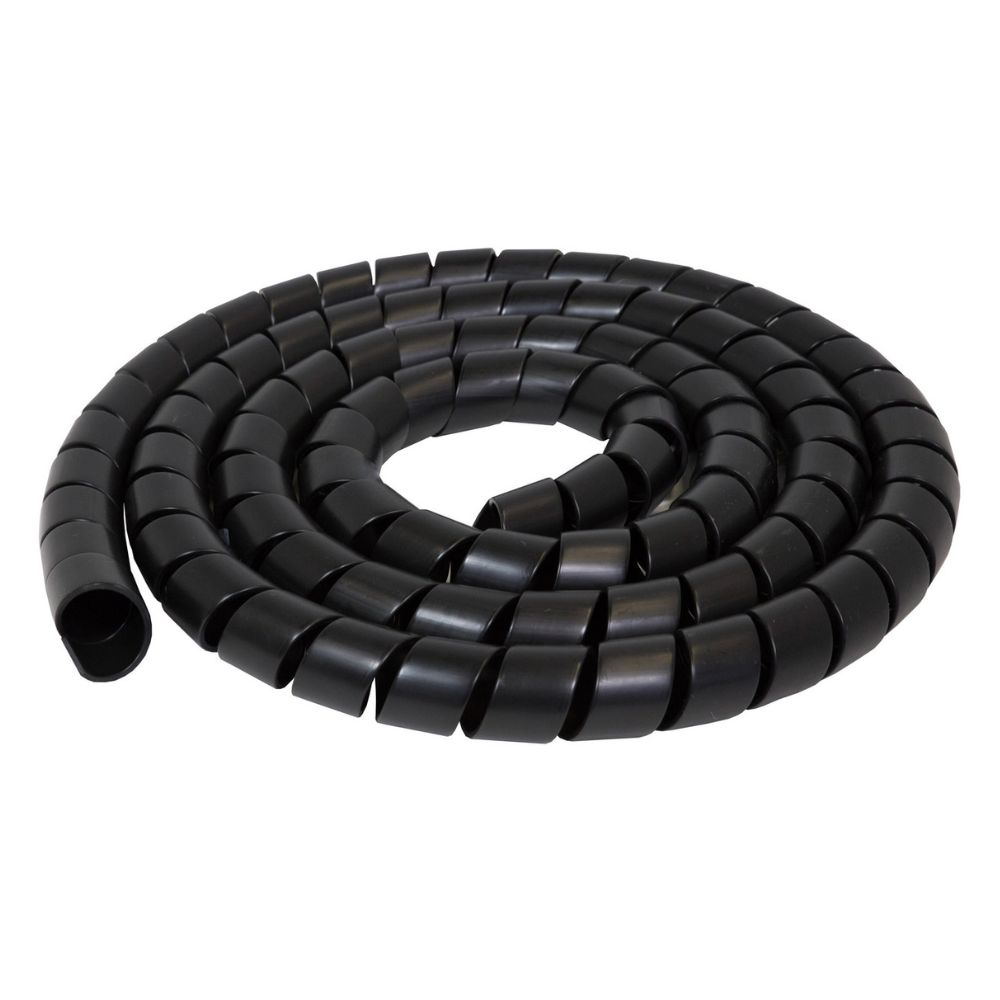
Coil and Spring Guards to Prevent Contact with Rough Surfaces
Coil and spring guards are physical barriers placed around hydraulic hoses to protect them from external damage caused by rough surfaces, impact, or abrasion. These guards are especially useful in environments where hoses are exposed to heavy machinery, sharp edges, or areas with frequent movement.
Coil Guards: Made from metal or heavy-duty plastic, coil guards wrap around the hose and act as a buffer between the hose and its surroundings.
Spring Guards: These are similar to coil guards but provide additional flexibility while still preventing contact with rough surfaces.
Guidelines for Guard Selection Based on Application
Select guards based on the specific hazards in the application environment. For areas with a high risk of abrasion, metal or heavy-duty plastic coil guards may be the best option. In applications requiring more flexibility, spring guards are preferable. Always ensure that the guard material is compatible with the hose and does not affect its performance.
Preventing Contamination
How Contaminants Enter Hydraulic Systems
Contaminants such as dirt, metal particles, and moisture can enter hydraulic systems through various points, including during hose installation, fluid refills, or component wear. Contaminants can erode the inner lining of hoses, block fluid pathways, and reduce the efficiency of the system.
Steps to Filter Fluids and Avoid Particulate Contamination
Use Quality Filters: Installing high-quality filters in the system can help prevent contaminants from entering the hoses and causing damage.
Clean Components Before Installation: Ensure that all components, including hoses, fittings, and connectors, are cleaned thoroughly before installation to avoid introducing contaminants into the system.
Monitor Fluid Quality: Regularly check the hydraulic fluid for signs of contamination and replace it as necessary. Proper fluid maintenance helps reduce the risk of contaminants damaging hoses.
Proper Storage Techniques to Avoid Contamination Before Installation
Store hydraulic hoses in a clean, dry environment, away from direct sunlight and exposure to moisture or chemicals. Use protective caps or plugs to cover the ends of hoses during storage to prevent contaminants from entering the hose before it is installed.
Regular Inspections and Preventive Maintenance
How to Set Up an Inspection Routine
Regular inspections are critical to identifying signs of wear or damage before they result in hose failure. Establish a routine that includes visual checks, pressure tests, and physical inspections of the hose material. Document these inspections and monitor the condition of each hose in the system.
What to Look for During Visual Inspections
Cracks or Worn Spots: Inspect the hose surface for visible cracks, abrasions, or worn areas.
Leaking Fluid: Check for signs of fluid leaks around the hose fittings and along the length of the hose.
Discoloration or Deformation: Look for any discoloration or deformation in the hose material, which may indicate chemical degradation or heat damage.
Tools for Monitoring Hose Wear and Condition
Pressure Gauges: Use pressure gauges to monitor the system’s pressure levels and ensure they remain within the hose’s rated capacity.
Hose Diagnostic Tools: There are tools available that can detect internal wear or weakening in hydraulic hoses, providing early warnings of potential failures.
Pressure Management
Maintaining Correct Operating Pressure
One of the most critical factors in extending the life of hydraulic hoses is maintaining the correct operating pressure. Ensure that the pressure within the system does not exceed the hose’s rated limits. Operating under high pressure for extended periods can cause the hose to weaken and fail.
Impact of Over-Pressurization on Hose Life
Over-pressurization can lead to bulging, cracking, or bursting of the hose. It places excessive stress on the hose’s internal layers, which can reduce its flexibility and strength over time. Frequent pressure spikes can be especially harmful, as they may not immediately cause failure but will shorten the hose’s lifespan.
Monitoring System Pressure and Avoiding Pressure Spikes
Use pressure regulators and relief valves to ensure the system remains within safe operating parameters. Monitor pressure levels continuously with sensors or gauges and address any sudden spikes in pressure as soon as they occur. Proper pressure management helps maintain hose integrity and prevents premature failure.
Environmental Considerations and Solutions
Hydraulic hoses are often exposed to various environmental factors that can significantly impact their performance and lifespan. To ensure longevity, it’s essential to protect hoses against temperature extremes, UV and weather exposure, chemical exposure, and the effects of vibration and movement. Here are the key environmental considerations and solutions to address them.
Protecting Against Temperature Extremes
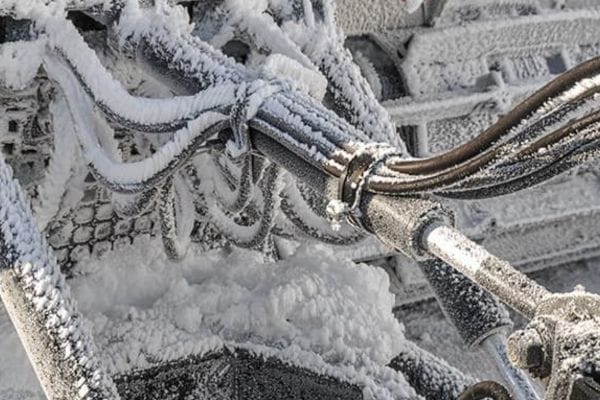
Effect of Heat and Cold on Hose Materials
Extreme temperatures can have a detrimental effect on hydraulic hose materials. Heat can cause the hose material to soften, leading to deformation, swelling, and reduced pressure capacity. Prolonged exposure to high temperatures may also result in premature aging of the hose, causing cracks or leaks. Conversely, cold temperatures can make the hose material brittle, increasing the risk of cracking or snapping when the hose is flexed. In severe cold, hoses may lose their flexibility entirely, which can lead to failure during operation.
Insulation and Protective Wraps for Temperature Protection
To combat temperature extremes, insulation, and protective wraps are commonly used to shield hydraulic hoses. Insulation materials, such as foam, silicone, or fiberglass, can help regulate the temperature around the hose, preventing direct exposure to heat or cold. These wraps act as a barrier, ensuring that the hose remains within its optimal operating temperature range. Protective wraps are particularly effective in environments where the hose is exposed to radiant heat sources, such as engines or machinery.
Selecting Hoses with the Correct Temperature Rating
When selecting hydraulic hoses, it is crucial to choose hoses with the correct temperature rating for the specific application. Manufacturers provide hoses with temperature ratings that indicate their ability to withstand heat and cold. Using hoses that are rated for the temperature conditions of your environment will prevent the material from degrading and ensure consistent performance. Always refer to the manufacturer’s specifications to determine the correct temperature rating for your application.
UV and Weather Exposure
UV Degradation and Its Impact on Hydraulic Hoses
Exposure to ultraviolet (UV) radiation from the sun can degrade hydraulic hose materials over time. UV radiation breaks down the molecular structure of the hose, causing it to become brittle, cracked, and discolored. This degradation not only weakens the hose’s structure but also increases the likelihood of leaks or bursts, especially in outdoor applications where hoses are exposed to direct sunlight.
Using UV-Resistant Hose Coverings
One of the most effective ways to combat UV degradation is to use UV-resistant hose coverings. These coverings are designed to block or reflect UV radiation, protecting the underlying hose material from damage. UV-resistant materials, such as synthetic rubbers or plastics, are commonly used to create these protective layers. Additionally, some manufacturers produce hoses with built-in UV resistance, eliminating the need for additional coverings. Selecting hoses or coverings with UV-resistant properties is essential for any outdoor application.
Storing Hoses Away from Direct Sunlight and Moisture
Proper storage practices can also help mitigate the effects of UV and weather exposure. When hoses are not in use, store them in a cool, dry area away from direct sunlight and moisture. If storage outdoors is unavoidable, use protective covers or shade to keep hoses shielded from the sun and rain. Moisture can accelerate the degradation process, especially in combination with UV exposure, so keeping hoses dry during storage is key to preserving their integrity.
Managing Chemical Exposure
Impact of Chemical Exposure on Hydraulic Hoses
Hydraulic hoses can be exposed to various chemicals, including oils, solvents, acids, and other industrial fluids. Chemical exposure can lead to significant degradation of the hose material, causing swelling, softening, or cracking. Depending on the chemicals involved, the hose may lose its flexibility, become brittle, or even dissolve in extreme cases. This can lead to premature failure and necessitate frequent replacements if not properly managed.
How to Select Hoses with Proper Chemical Resistance
To protect against chemical exposure, it’s important to select hoses made from materials that are resistant to the specific chemicals present in your environment. Manufacturers typically provide chemical resistance charts that list which materials are compatible with various fluids. For example, hoses made from PTFE (Teflon), EPDM rubber, or stainless steel-braided hoses are highly resistant to corrosive chemicals. Selecting a hose with the appropriate chemical resistance will ensure it maintains its integrity, even when exposed to harsh substances.
Cleaning Procedures to Remove Chemical Residues
Regular cleaning of hydraulic hoses is essential to remove any chemical residues that may accumulate on the surface. Using appropriate cleaning agents that are compatible with the hose material can help prevent chemical build-up that could lead to degradation. After cleaning, rinse the hoses thoroughly and allow them to dry before putting them back into service. Proper cleaning procedures can extend the life of hoses exposed to chemicals by reducing the potential for damage.
Vibration and Movement
Impact of Vibration on Hose Integrity
Vibration is another environmental factor that can significantly impact the integrity of hydraulic hoses. Continuous vibration can cause hoses to rub against machinery, other hoses, or surrounding surfaces, leading to abrasion and wear. In some cases, vibration can also cause the hose fittings to loosen, resulting in leaks or disconnection. Over time, repeated vibration can weaken the hose material, making it more susceptible to failure.
Using Hose Clamps and Vibration Dampers
To counteract the effects of vibration, the use of hose clamps and vibration dampers is highly recommended. Hose clamps help secure the hose in place, preventing excessive movement that can lead to abrasion or wear. Vibration dampers, made from rubber or other flexible materials, absorb the vibrations and reduce the impact on the hose. These dampers can be installed between the hose and its mounting points, minimizing direct contact with vibrating surfaces.
Strategies for Minimizing Hose Movement and Rubbing Against Surfaces
In addition to clamps and dampers, proper hose routing and installation are crucial for minimizing movement and reducing friction. Avoid routing hoses in areas where they are likely to rub against sharp edges or other hoses. Instead, use protective sleeves or guards in areas where contact is unavoidable. Ensure that hoses are installed with enough slack to accommodate movement but not so much that they are left to dangle or sway excessively.
Strategically securing hoses at intervals can help reduce movement and prevent rubbing against surfaces. Regular inspections should also be conducted to identify any areas where hoses are being subjected to excessive movement or wear. Addressing these issues early can prevent long-term damage and extend the lifespan of the hoses.
Conclusion
Ultimately, the key to preventing costly downtime and improving safety is taking a proactive approach to hose protection. By applying the best practices outlined in this guide, you can safeguard your hydraulic hoses from common environmental and mechanical threats. Now is the time to invest in the appropriate protective solutions for your hoses—ensuring long-term reliability, reducing the risk of system failure, and maintaining a safe and productive workplace.
FAQ
What causes hydraulic hoses to fail prematurely?
Hydraulic hoses can fail due to abrasion, incorrect installation, exposure to extreme temperatures, chemical contamination, overpressure, and environmental factors such as UV radiation or moisture.
How can I protect hydraulic hoses from abrasion?
Use abrasion-resistant sleeves or guards, ensure proper hose routing to avoid contact with rough surfaces, and secure hoses with clamps to prevent movement.
What should I look for during hose inspections?
Check for leaks, visible cracks, worn spots, stiffness or brittleness in the hose material, and any signs of damage at the fittings or connections.
How do I prevent hose failure due to temperature extremes?
Select hoses rated for your system’s temperature range, use insulation or protective wraps, and avoid exposing hoses to direct heat sources or extreme cold.
Why is regular maintenance important for hydraulic hoses?
Regular maintenance helps identify and fix potential issues before they lead to hose failure, reducing downtime and ensuring system efficiency.
What are the benefits of using UV-resistant hose coverings?
UV-resistant coverings protect hoses from sun damage, preventing degradation, cracking, and discoloration, especially in outdoor applications.




